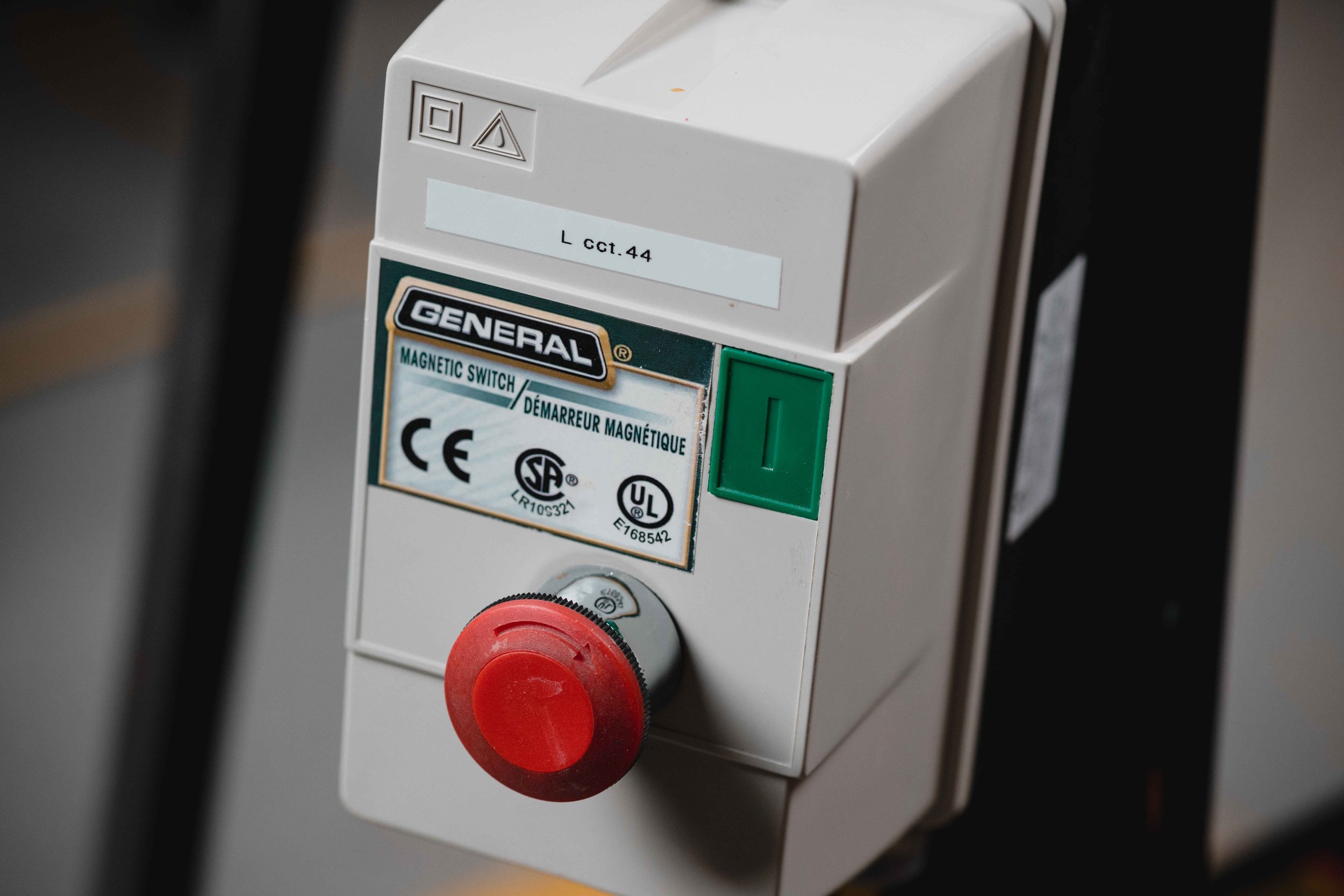Scroll Saw
Subject: Construction, Exploring Technology
Objective: Students will understand the foundational theory and applied concepts surrounding the safe use of the scroll saw. These standards are to be cross-referenced with the OCTE Standards linked here, and confirmed with the documentation which is printed in the administration kept in the classroom itself. No student should operate any equipment without adhering to the standard operating procedures, shop safety rules, and all work, setup, maintenance, and other such shop activities must be done with the express foreknowledge and approval of the appropriate respective workshop teacher under supervision and during shop hours.
FOR OFFICIAL STANDARDS OF REFERENCE PLEASE LOOK TO THIS LINK BEFORE CONTINUING
Nothing here is intended to take precedence over the directions set out in the manufacturer’s instructions, nor those safety set out by any ministry of education, ministry of labour, educational board, or legislative body. This is purely an amalgamation of resources to support education, but is not intended to be a definitive source for safety or procedure. For your own safety, refer to your respective legislation and overarching bodies regulating standards to ensure that you are following procedures which reflect the most recent and supported bodies of research.
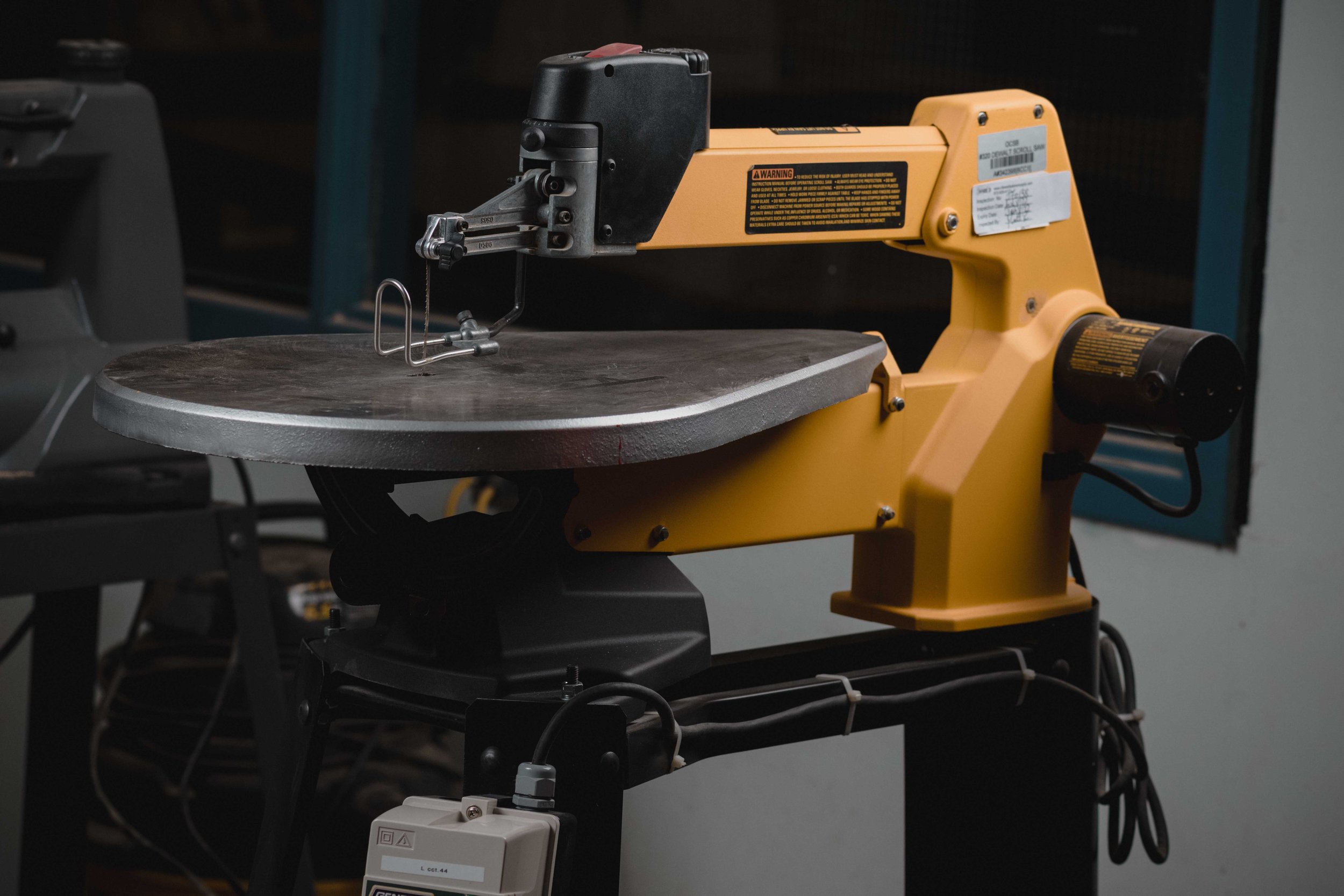
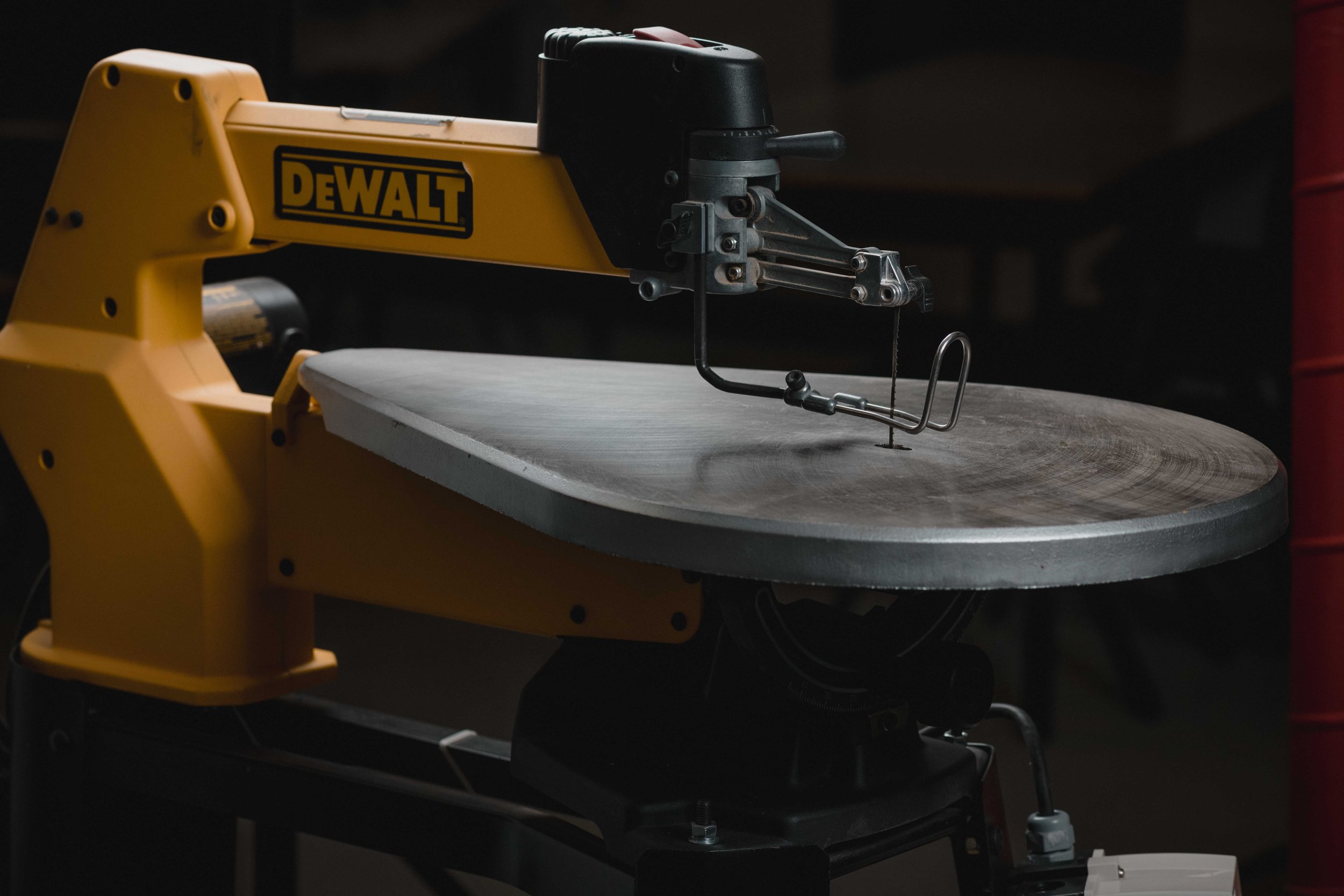

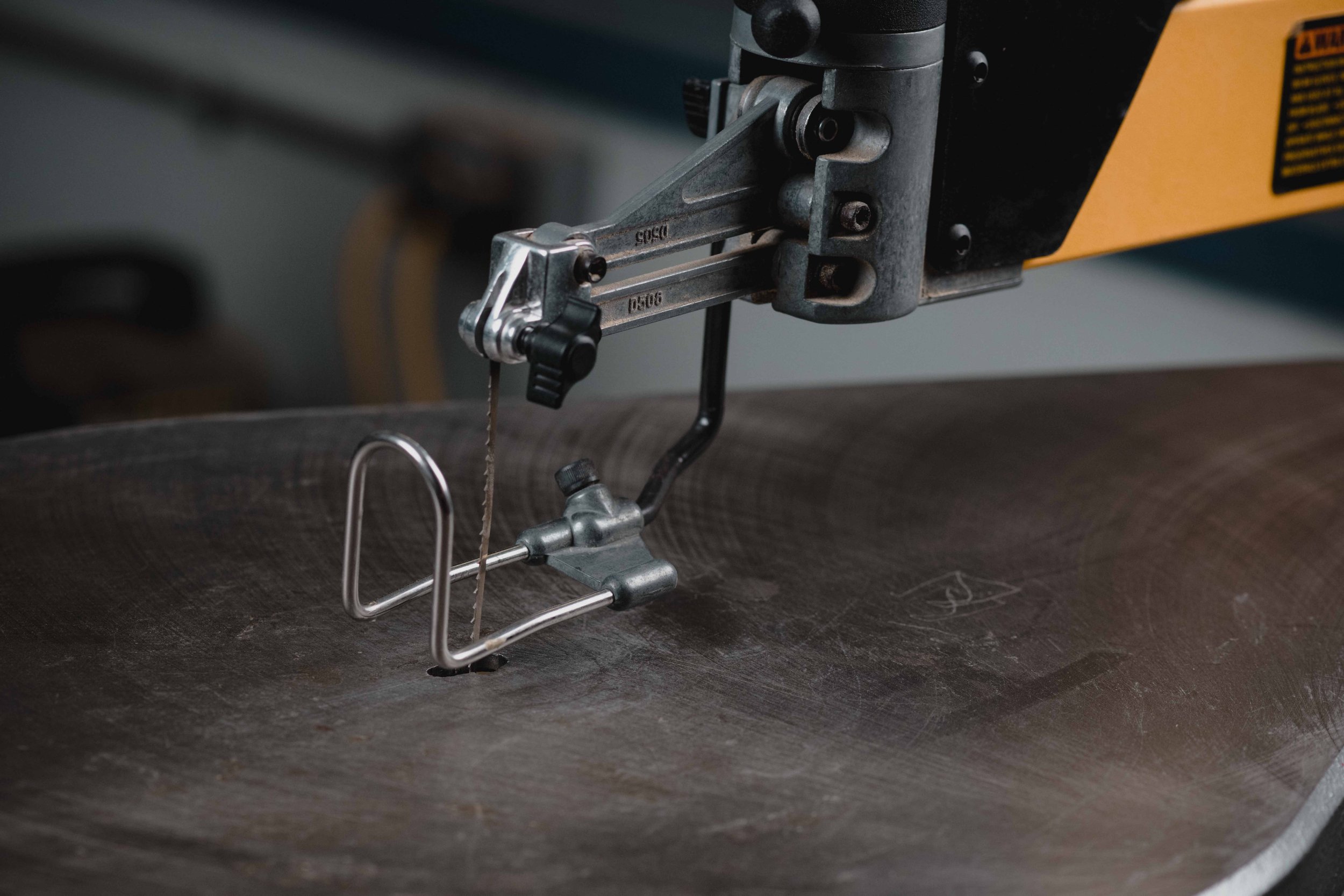



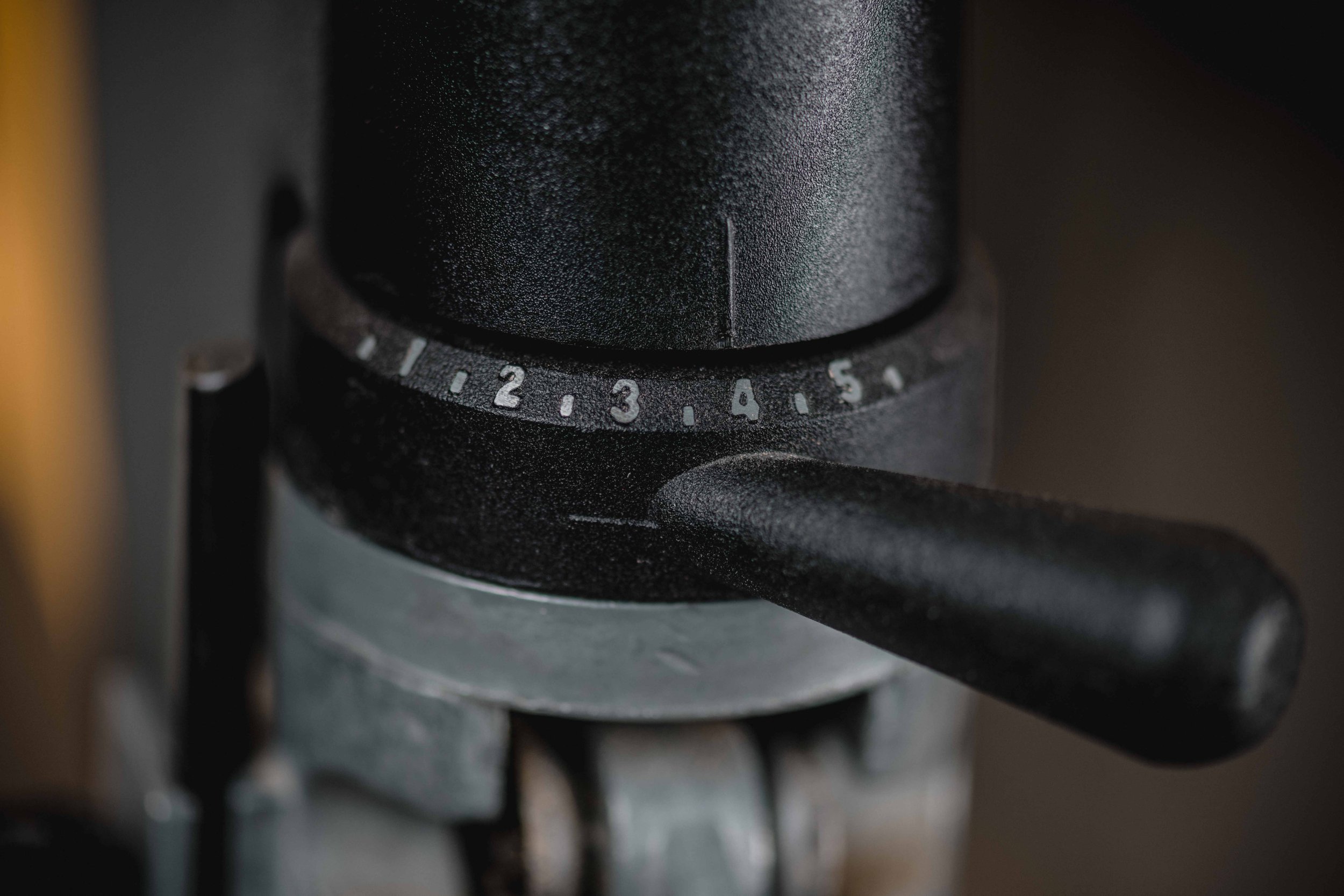


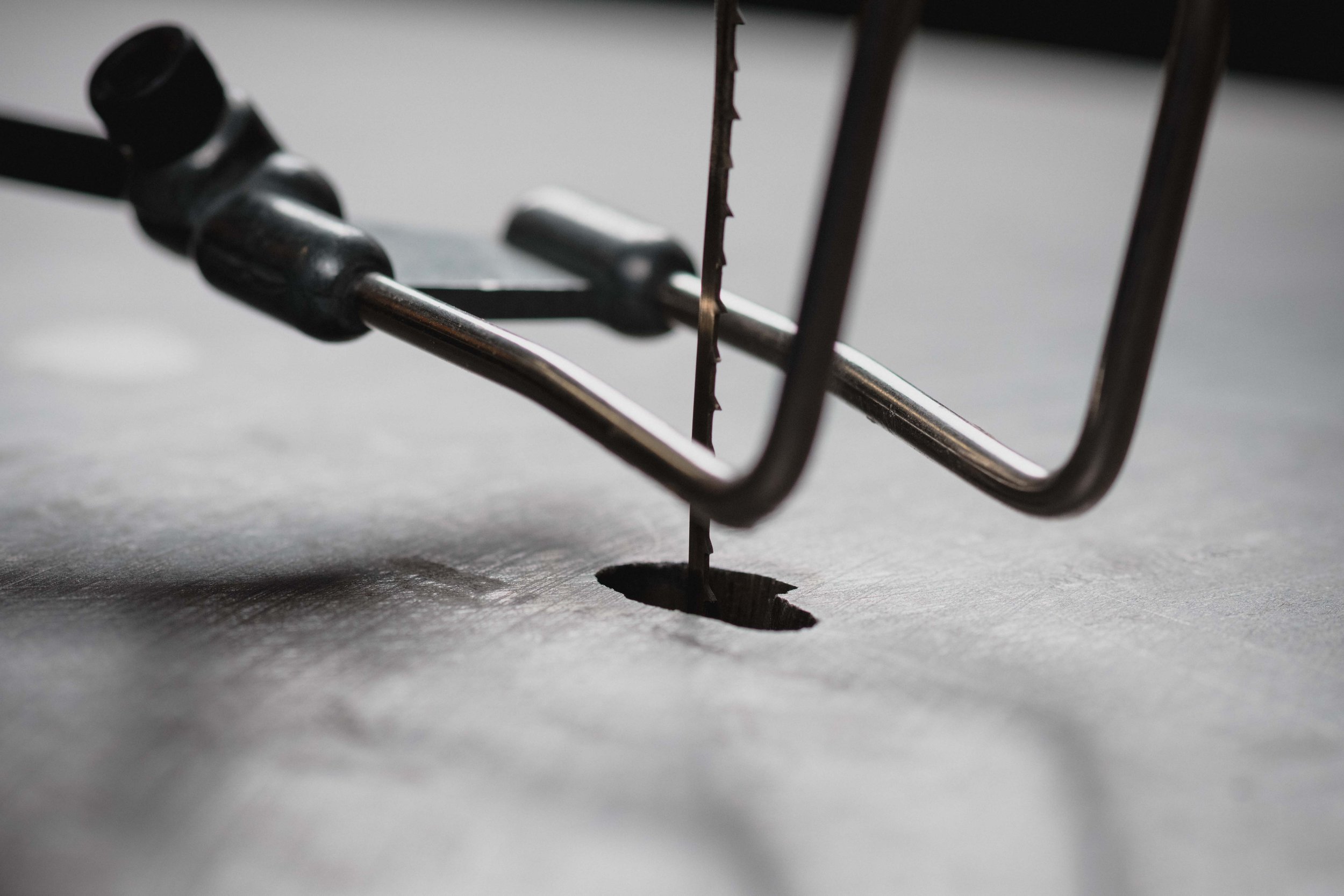
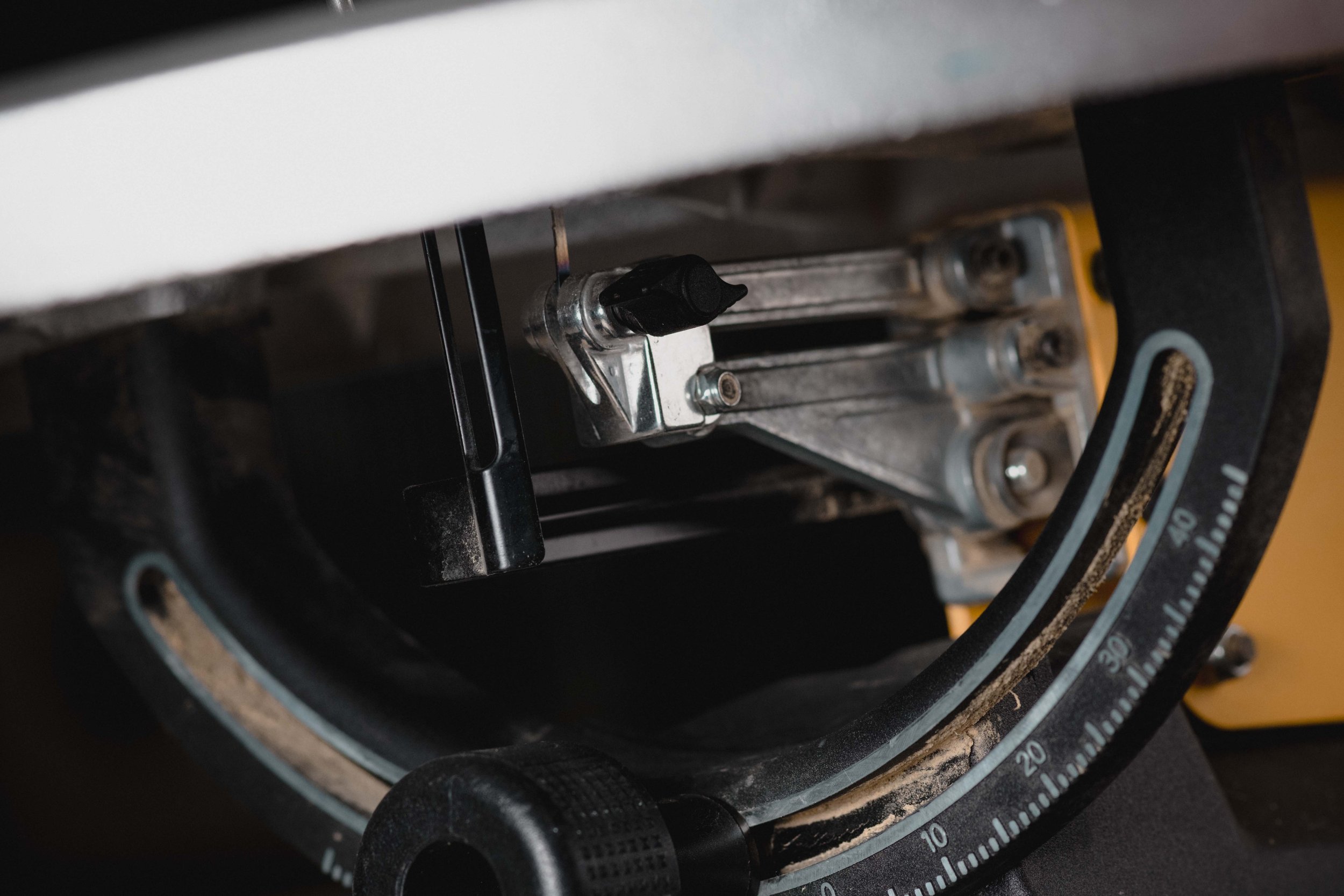

Intro
Scroll saws are one of the most basic and safest tools in our shop. It’s so friendly and safe that OCTE (Ontario’s Council for Technology Education) even has it listed under approved tools for elementary school students. With that in mind, tools still require their operators to use them in the manner they were intended, and with the appropriate supervision and personal protective equipment, so be sure to use caution and respect the instruction given at all times.
The scroll saw is effectively a reciprocating saw tool system, meaning the blade moves back and forth - unlike tools where the blade is wheeled in a circle (like the bandsaw), or the blade itself is a spinning element (like a table saw).
STUDENT SAFETY PASSPORT TOOL COMPONENTS LIST
For your understanding (and for your safety passport test) the main components you will be introduced to during your instruction are as follows:
Motor starter and shut-off (ON/OFF)
Blade
Blade guard(s) and adjustment knobs
Blade holding assemblies (top and bottom)
Table
Saw arm and throat
Speed control knob
Blade tensioner
Operator location (Non-slip Surface) and work area (floor painted lines)
While there are many other components, these are the main ones you will be expected to have a familiarity with in order to pass your student safety passport assessment demonstration. You will also be expected to know that you are required to remove jewelry, adjust or tie back any loose clothing or hair to ensure it is safely away from the tool, and always wear proper eye protection (safety glasses or protective shield) and put it on before starting the tool. All personal protective equipment is a must, and you must use it at all times.
Below the table you will find the adjustment knob and angle increment labels to support any adjustment away from perpendicular cuts.
The scroll saw is particularly useful for making detailed cuts, or ones with sharper turns which other tools would not be capable of handling. With that in mind, the tool is not intended for excessive pressures, as it will lead to broken blades, uneven and angled cuts in the material, and inconsistent results. While operating the tool, ensure that you focus your pressure downwards through the material into the table, NOT laterally towards the blade. Always adjust to the correct speed to account for the project and its materials, allow any material to move very slowly through the feeding process. If necessary, use an accessory such as a push stick if you are required to get closer to the blade. Your fingers should always stay out of the path of the blade, so plan your work step by step to ensure your fingers are a minimum of 3cm back from the guards and blade.
When planning your cuts, be sure that you always cut on the waste side of the line, which will allow you to sand back to the path, or otherwise remove the excess. Also, plan your cuts carefully! Should you find that your material seems to be moving slowly through the feed, consider your pressure or the amount of tension/twist being applied to the blade. If you push too hard the blade will bend, or there is too much tension from a twist or turn it will bind, slowing down the progress and often leading to poor cuts; so ask yourself if you need to readjust to allow for relief cuts to be done first (as demonstrated in your safety passport lesson) or otherwise lessen the pressure and try again. Blades as thin as the ones you use with this tool tend to break often (and easily) so please remain calm when it happens, turn off the machine immediately - do not continue to try to use it, remain with the machine until it is completely stopped, then advise the teacher.
The scroll saw is a one-person tool, and operating it while talking with others, or allowing others to be within the operational area, is not permitted. Broken blade elements may come loose and injure others if they are too close, so kindly remember that your attention needs to be at all times on the tool, the material, situational awareness of your environment and your safe operation within the shop. For full detailed understanding of your expectations, please refer to the shop rules in the classroom online workspace, the OCTE site, the board site, your course outlines, or the linked documents at the bottom of the page.
VIDEO RESOURCES
A two-part video set on scroll saws for beginners. These are a bit long, so be prepared to sit for a bit, but also remember that there are some included elements which you’re not allowed to do - like blade replacement/adjustment, etc.
The first in a two-part scroll saw instructional video developed by the Acutabove Woodworking.
The second in a two-part scroll saw instructional video developed by the Acutabove Woodworking.
Supporting Accessories
Examples of Scroll Saw accessories - some commonly used, and some which people might not consider. Please do not use or attempt anything we do not instruct in class.
Scroll saws are incredibly basic tools which is why we introduce them directly after cordless power tools in our lessons. They represent the first of the “shop-side” tools, in that they’re the first of the instructional portions we explore in the shop itself. Some models offer accessories which others don’t, but commonly you’ll see adjustable dust blowing arms to clear the sawdust from the path so that you can see for any blade drift (subtle shifts off of your intended pathway). Also, many like the DeWalt DW-788 we have in our shop have accessory articulating arms with lights to support your vision while working with more intricate work.
Scroll Saw Safety
A Scroll Saw safety video developed by TechEd Learning. Though they do not use the same model we have in our shop, the concepts are universally applicable.
Though scroll saws are likely one of the safest tools we’ll be exploring in our shop, there are some risks inherent to any work with tools. Take a look at the video here to see what we can do to be as safe as is possible with our tools and ensure success in our projects. If in doubt of anything at any time, stop working, safely shut off the machine, and ask your instructor.
Safety Rules for Scroll Saws
At all times, as with the majority of the corded power tools in our shop, the emergency shut-off looks like this. The stop is at thigh-level, and should be the default means for turning off the tool,
Seek teacher’s permission before using the machine, ensure that the project itself has been approved, and that you have satisfied the required tool qualifications on your student safety passport
Never operate any machine while under the influence of medicine, drugs, or alcohol, if you are fatigued, or otherwise emotionally/psychologically impaired. If you have any uncertainty about your ability to operate a tool or piece of equipment safely, immediately bring this to the attention of your instructor
Use appropriate PPE (eyewear, ear protection, gloves, etc.), ensure that jewelry is removed, and that loose/long hair, as well as articles of clothing are tied back or otherwise secured or removed
Inspect work area for cleanliness (consider debris under the table where you might step while moving the material, the table itself, and along any recesses or grooves)
Inspect the material being cut for foreign materials, damage, or potential quality/grain issues (Consider staples in the ends, rocks from the ground of a lumber yard, straps, nails, etc.). All material must have one face surfaced prior to being cut on the scroll saw
Ensure the blade is sharp, secure, and the correct one for the job, and also be certain that you have the correct table inserts and throat plates for the blade installed
Inspect and use the guard(s) appropriately every time, as well as the dust collection system (which many scroll saws don’t have)
Keep your hands out of the path of the blade, and make sure to adhere to a distance of 3cm clear from the blade at all times operating the tool - even when the machine is not active
If the blade breaks turn off machine and keep hands clear
Aside from moderate speed adjustments relative to the wood type and detail in the project, adjustments to the blade itself (including blade replacements - which are often frequent) are to be done by the teacher or a board-approved professional ONLY
Hold material firmly against the table and never reach across the blade
Ensure the tool is off and the blade is completely stopped when removing any pieces, large or small
SEE FURTHER SAFETY DIRECTIONS IN THE LINKED SUPPORTING RESOURCES MATERIALS AT BOTTOM OF THE PAGE
Supporting Resources
Tool Specific:
OCTE Scroll Saw Safety Info Sheet
OCTE TIJKB1 Scroll Saw Student Handout
OCTE TIJKB2 Scroll Saw Student Handout
Broader Supporting Resources:
OCTE Health and Safety
OCTE SAFEdocs
OCTE toolSAFE
All supporting resources and much of the content are drawn directly from guidelines, standards, and materials on the OCTE pages; they are simply linked here for learner reference, and ease of instruction, however neither this page, nor the other materials represent OCTE. The other resources such as YouTube links, are included for learner refreshers.




